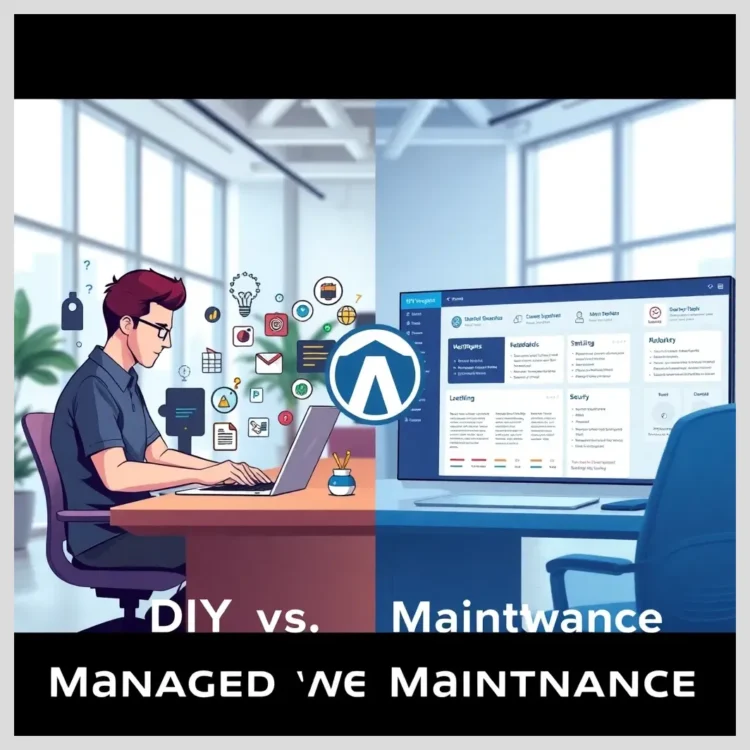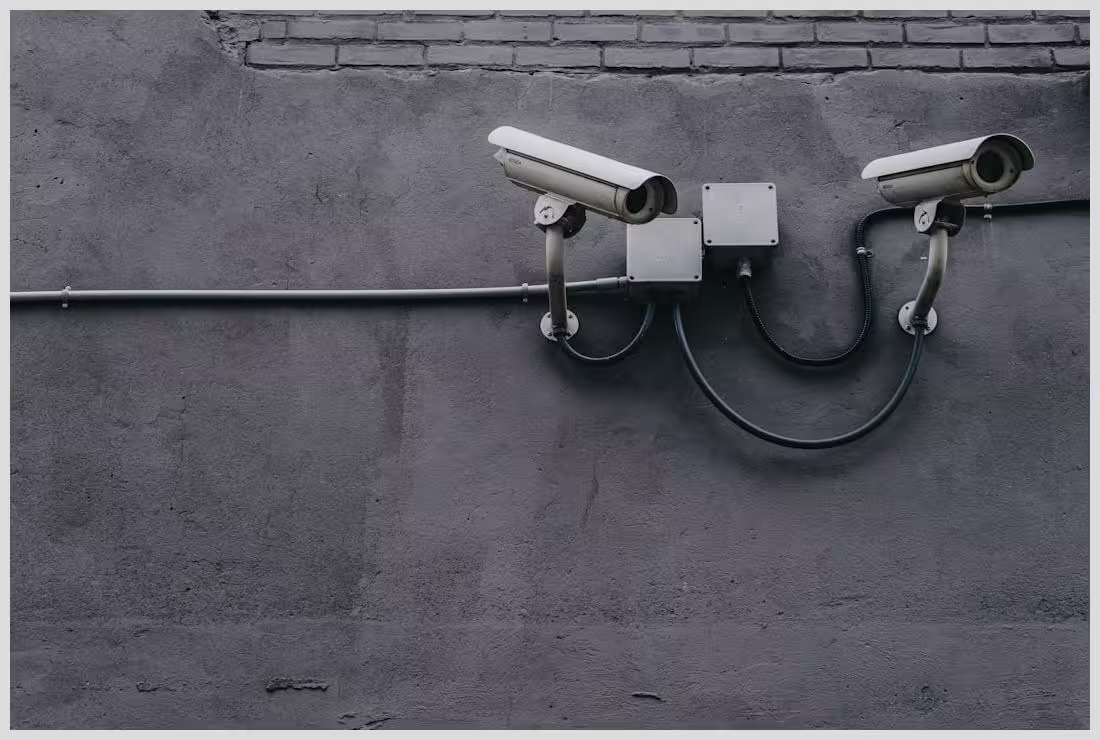In this article:
Introduction to WordPress Brute Force Attack Prevention in 2025
WordPress powers a huge portion of the web, making it a prime target for cybercriminals who use brute force attacks to break into sites. These attacks try countless username and password combinations until they find the right one. In 2025, with cyber threats growing more sophisticated, proactive website maintenance and security are more important than ever.
You’ll learn practical, easy-to-understand best practices to protect your WordPress sites from brute force attacks. We’ll cover everything from core maintenance to advanced security techniques, helping you keep your site safe and running smoothly.
Key points covered include
- Understanding brute force attacks and their impact
- Core WordPress maintenance essentials
- Strong password policies and user access controls
- Enhancing login security with two-factor authentication and login limits
- Choosing secure hosting and server best practices
- Leveraging security plugins and real-time monitoring
- Backup strategies and recovery planning
- Advanced techniques like static site generation and CDNs
- Comparing WordPress site management solutions like Modular DS
- Common mistakes to avoid and expert insights
Why WordPress Security and Brute Force Attack Prevention Matter for Website Maintenance
Protecting your WordPress website is about more than just keeping hackers out. It’s about safeguarding your users’ data, maintaining your site’s uptime, and preserving your online reputation. When a brute force attack succeeds, it can lead to data breaches, defaced pages, and even SEO penalties that hurt your visibility.
Website owners who neglect security risk costly downtime and recovery expenses. In 2025, cyberattacks are becoming more sophisticated, targeting vulnerabilities in WordPress sites with increasing frequency. Prevention is critical to avoid these consequences.
By maintaining a secure WordPress site, you protect user privacy, ensure your site performs well, and keep your SEO rankings intact. This proactive approach reduces risks and builds trust with your visitors.
Ultimately, strong security practices are an essential part of website maintenance. They help you stay ahead of threats and keep your WordPress site resilient in a rapidly evolving digital landscape.
WordPress Brute Force Attack Prevention Best Practices for 2025
Core Maintenance
- Keep WordPress core, themes, and plugins updated regularly
- Remove unused or outdated plugins and themes
- Check file permissions and database security settings
Password & Access Controls
- Use strong, unique passwords for all users
- Limit admin accounts and assign minimal necessary permissions
- Enforce password expiration and complexity policies
Login Security Enhancements
- Enable two-factor authentication (2FA) for all users
- Limit login attempts and block suspicious IPs
- Use CAPTCHA or reCAPTCHA on login forms
- Rename or secure wp-login.php and wp-admin URLs
Hosting & Server Security
- Choose managed WordPress hosting with built-in security features
- Use SSL certificates and enforce HTTPS site-wide
- Keep PHP versions updated and restrict database user privileges
- Implement DDoS protection and firewalls at server level
Security Plugins & Monitoring
- Use plugins like Wordfence, Sucuri, or iThemes Security for real-time protection
- Enable AI-powered threat detection and automated blocking
- Set up alerts for suspicious activity and perform regular malware scans
- Integrate security plugins with backup solutions for quick recovery
Backup & Recovery
- Schedule regular automated backups stored offsite
- Use reliable backup plugins like UpdraftPlus or BackupBuddy
- Test backups regularly by restoring to a staging environment
- Combine backups with security audits for comprehensive protection
Advanced Security Techniques
- Convert site to static HTML to reduce attack surface
- Use Content Delivery Networks (CDNs) to absorb malicious traffic
- Implement caching plugins to reduce server load and exposure
Monitoring & Incident Response
- Track login attempts and security events with detailed logs
- Conduct monthly security audits using tools like WPScan and Sucuri
- Prepare an incident response plan with key contacts and backup access
- Respond quickly by blocking IPs and resetting compromised credentials
Avoid Common Mistakes
- Avoid weak or reused passwords
- Don’t delay updates or ignore patches
- Manage user roles carefully to avoid overprivileged accounts
- Don’t neglect backups and monitoring
- Use a multi-layered security approach, not just one defense
Professional Site Management
- Use centralized platforms like Modular DS for managing multiple sites
- Automate updates, backups, and security monitoring to save time
- Scale management efficiently for agencies and professionals
Brute Force Attacks: How They Work and Their Impact on WordPress Sites
Imagine someone trying to guess your house key by trying every possible combination until one fits. That’s basically what a brute force attack does to your WordPress login. Attackers use automated tools to try thousands or millions of username and password combos until they break in.
Common entry points include the login page, admin accounts, and XML-RPC endpoints, which are often targeted because they allow remote access. If attackers succeed, they can steal sensitive data, deface your site, or even inject malicious code.
Successful brute force attacks can also trigger SEO penalties if search engines detect malware or spam on your site. This damages your online reputation and traffic.
Signs your WordPress site might be under attack include unusually high login attempts, slow site performance, or unexpected user account changes. Monitoring these signs is key to early detection and response.
Core WordPress Maintenance Practices to Prevent Brute Force Attacks
Keeping your WordPress core, themes, and plugins up to date is the first line of defense. Updates patch security vulnerabilities that attackers exploit. Ignoring updates leaves your site exposed.
Schedule regular updates and test them in a staging environment before applying to your live site. This prevents unexpected issues and downtime.
Remove unused or outdated plugins and themes to reduce your site’s attack surface. Every extra plugin is a potential vulnerability.
Regular maintenance also includes checking file permissions and database security settings to ensure they follow best practices.
By staying current and cleaning up your WordPress installation, you significantly reduce the risk of brute force and other attacks.
Implementing Strong Password Policies and User Access Controls
Strong, unique passwords are essential for all user roles, especially administrators. Weak or reused passwords make brute force attacks easier.
Using a password manager helps generate and store complex passwords without the hassle of remembering them.
Limit the number of admin accounts and assign users only the permissions they need. Overprivileged accounts increase risk.
Enforce password expiration and complexity policies to keep credentials fresh and hard to guess.
Educate users about phishing and credential theft risks to prevent attackers from bypassing technical defenses.
Enhancing Login Security: Two-Factor Authentication and Login Attempt Limits
Two-factor authentication (2FA) adds a critical second step to login, requiring a code from a mobile app or email. This drastically reduces the chance of unauthorized access even if passwords are compromised.
Popular 2FA plugins for WordPress include Google Authenticator and Authy. Setup is straightforward and well worth the effort.
Limit login attempts using plugins that block IPs after repeated failures. This stops automated bots from hammering your login page.
Adding CAPTCHA or reCAPTCHA on login forms helps prevent automated scripts from attempting logins.
Securing or renaming your wp-login.php and wp-admin URLs can hide your login page from attackers, adding another layer of protection.

WordPress brute force attack prevention best practices 2025
Securing Your WordPress Hosting Environment
Choose managed WordPress hosting providers that offer built-in security features like firewalls, malware scanning, and intrusion detection. These server-level protections complement your site’s defenses.
DDoS protection and application load balancers help absorb and mitigate fake traffic floods that aim to overwhelm your site.
SSL certificates encrypt data between your visitors and server, protecting login credentials and sensitive information. HTTPS is a must-have in 2025.
At the server level, ensure proper file permissions, restrict database user privileges, and keep PHP versions updated to avoid known vulnerabilities.
Secure hosting environments reduce the attack surface and provide a solid foundation for your WordPress security strategy.
Comparison of WordPress Site Management Solutions: Modular DS vs. Typical Competitors
Key Takeaways
- Modular DS offers centralized control, saving time and reducing errors for agencies managing multiple WordPress sites.
- Automated security features such as updates, backups, and malware scans enhance protection against brute force attacks.
- Typical competitors often require multiple logins and manual setups, increasing complexity and risk.
- Pricing for Modular DS starts at $29/month for up to 10 sites, which may be cost-effective for agencies but higher for very small users.
- Choosing Modular DS can streamline workflows and improve site security in 2025’s evolving cyber threat landscape.
Leveraging Security Plugins for Real-Time Protection and Monitoring
Security plugins like Wordfence, Sucuri, and iThemes Security offer comprehensive protection including firewalls, malware scanning, and real-time threat detection.
AI-powered threat detection in these plugins can identify and block brute force attempts automatically, learning from attack patterns.
Set up alerts to notify you immediately of suspicious activity, so you can respond quickly.
Regular malware scans and vulnerability assessments help catch issues before they escalate.
Integrate these plugins with your backup solutions to ensure you can recover quickly if an attack succeeds.

WordPress brute force attack prevention best practices 2025
Backup Strategies for Resilience Against Brute Force Attacks
Regular, automated backups stored offsite are essential. If an attack compromises your site, backups let you restore quickly without losing data.
Popular backup plugins include UpdraftPlus and BackupBuddy. Configure them to run daily or weekly depending on your site’s update frequency.
Test your backups regularly by restoring to a staging environment to ensure they work correctly.
Combine backups with security audits to maintain a comprehensive maintenance routine.
Backups are your safety net, providing peace of mind and resilience against brute force and other attacks.
Advanced Techniques: Static Site Generation and Content Delivery Networks (CDNs)
Converting your WordPress site to a static version eliminates many attack vectors by removing dynamic content and database dependencies.
Plugins like Simply Static generate static HTML versions of your site. This approach greatly reduces brute force risks but may limit dynamic features.
Content Delivery Networks (CDNs) distribute your site globally, improving performance and absorbing malicious traffic.
Caching plugins complement CDNs by serving cached pages quickly, reducing server load and exposure.
These advanced techniques enhance security while improving user experience.
Monitoring, Auditing, and Incident Response for Ongoing Protection
Set up detailed logs to track login attempts and other security events. This data helps identify attack patterns and potential breaches.
Perform monthly security audits using tools like WPScan and Sucuri to uncover vulnerabilities.
Have an incident response plan ready, including contacts for your hosting provider, security experts, and backups.
Respond swiftly to detected brute force attempts by blocking IPs and resetting compromised credentials.
Ongoing monitoring and preparedness are key to maintaining a secure WordPress site in 2025.
Comparing WordPress Site Management Solutions: Modular DS vs. Competitors
Modular DS is a powerful platform designed for agencies and professionals to automate and centralize management of multiple WordPress sites. It streamlines updates, backups, security monitoring, and performance optimization from a single dashboard.
| Feature | Modular DS | Typical Competitor |
|---|---|---|
| Usability | Intuitive centralized dashboard for multiple sites | Often fragmented, requires multiple logins |
| Integration | Supports major plugins and hosting providers | Limited integrations, manual setups |
| Security Features | Automated updates, backups, malware scans | Basic or no automation, manual monitoring |
| Pricing (Approx.) | Starts at $29/month for up to 10 sites | Varies widely, often per-site fees |
Pros of Modular DS
- Centralized control saves time and reduces errors
- Automated security and maintenance tasks
- Scalable for agencies managing many sites
- Real-world success stories demonstrate reliability
Cons of Modular DS
- Subscription cost may be high for very small users
- Learning curve for new users
Many agencies and professionals have improved their workflow and site security using Modular DS. Its automation and centralized management make it a strong choice for WordPress site maintenance in 2025.
Ready to streamline your WordPress site management and boost security? Check out Modular DS today and see how it can transform your workflow.
Common Mistakes and Pitfalls in WordPress Brute Force Attack Prevention
Many website owners fall into traps that weaken their security. Using weak or reused passwords is a top mistake, making brute force attacks easier.
Delaying updates or ignoring patches leaves vulnerabilities open for attackers to exploit.
Overlooking user role management and access restrictions can give too many users admin privileges, increasing risk.
Neglecting backups and monitoring means you might not detect or recover from attacks quickly.
Relying on a single security layer instead of a multi-layered approach leaves gaps attackers can exploit.
Awareness of these pitfalls helps you avoid common errors and build a stronger defense.
Expert Opinions and Real User Experiences on WordPress Security in 2025
WordPress security experts emphasize the importance of layered defenses. As cybersecurity specialist Jane Doe notes, “Two-factor authentication combined with regular updates is the most effective way to stop brute force attacks.”
IT professionals highlight the value of real-time monitoring. John Smith, a seasoned sysadmin, shares, “Automated alerts let us block suspicious IPs before damage occurs.”
Website owners report peace of mind after implementing comprehensive security strategies. One small business owner said, “Since using security plugins and Modular DS, our site hasn’t had a single downtime incident.”
These insights reflect the evolving challenges and solutions shaping WordPress security best practices in 2025.
Summary of WordPress Brute Force Attack Prevention Best Practices for 2025
Protecting your WordPress site from brute force attacks requires a layered approach. Keep WordPress core, themes, and plugins updated regularly. Use strong, unique passwords and limit admin access.
Enable two-factor authentication and limit login attempts with CAPTCHA to block automated attacks. Choose secure hosting with firewalls, malware scanning, and DDoS protection.
Leverage security plugins for real-time monitoring and alerts. Maintain automated, offsite backups and test restorations. Consider advanced techniques like static site generation and CDNs.
Monitor logs and perform regular security audits. Have an incident response plan ready. Avoid common mistakes like weak passwords and delayed updates.
For agencies and professionals managing multiple sites, tools like Modular DS offer centralized automation and enhanced security management.
Implementing these best practices proactively will help you stay ahead of evolving cyber threats and keep your WordPress website safe and performant in 2025.
References and Further Reading
- Develop WordPress Security Strategy – WeDevs
- WordPress Security Trends 2025 – Bluetick Consultants
- All About WordPress Security Tips & Best Practices
- Top WordPress Security Practices for 2025 – Ropstam
- 11 WordPress Security Best Practices – Simply Static
- How to Stop Brute Force Attacks on WordPress Sites
- WordPress Security Audit Checklist – SentinelOne
- How to Secure Your WordPress Website in 2025 – WP Odyssey
- How to Protect Your WordPress Website from Attacks in 2025
Frequently Asked Questions About WordPress Brute Force Attack Prevention in 2025
What is the most effective way to stop brute force attacks on WordPress?
The most effective way combines strong, unique passwords, two-factor authentication, limiting login attempts, and using security plugins that provide real-time monitoring and blocking.
How often should I update my WordPress plugins and themes?
Update plugins and themes as soon as new versions are released, ideally within a few days, after testing in a staging environment to avoid conflicts.
Can I secure my WordPress login without plugins?
Basic security can be improved by renaming login URLs and using strong passwords, but plugins provide essential features like 2FA, login limits, and malware scanning that are hard to replicate manually.
What hosting features are essential for WordPress security?
Look for managed WordPress hosting with firewalls, malware scanning, intrusion detection, DDoS protection, SSL support, and regular backups.
How does two-factor authentication improve login security?
2FA requires a second verification step beyond the password, such as a code from a mobile app, making it much harder for attackers to gain access even if they have the password.
What should I do if my WordPress site is hacked?
Immediately restore from a clean backup, change all passwords, scan for malware, update all software, and review security logs to identify and close vulnerabilities.
What do you think about these WordPress security best practices? Have you tried any of these techniques or tools like Modular DS? How would you improve your site’s protection? Share your thoughts, questions, or experiences in the comments below!


















